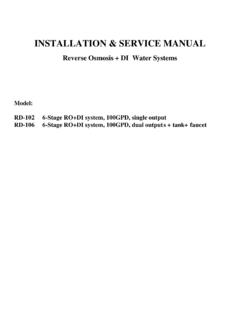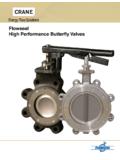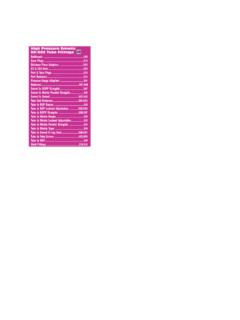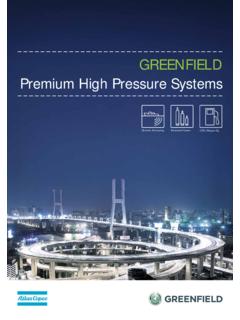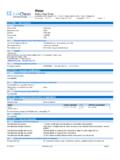Transcription of INSTALLATION & SERVICE MANUAL - Reverse …
1 INSTALLATION & SERVICE MANUAL Under-the-sink Reverse Osmosis water Systems Model: RO 585 5-Stage RO system, 85 gal/day at 80 psi. RO 585A 5-Stage RO system with digital water Quality TDS meter RO6100 DINT 6-Stage RO+DI system, 100 GPD, single output RO6100+DI 6-Stage RO+DI system, 100 GPD, dual output+tank+faucet 2 PRODUCT SPECIFICATION 5- Stage Reverse Osmosis water Purification Systems Model no: RO585 Capacity: Generates 45 to 85 gallons per day depends on water temperature, pressure , chemistry variations) System includes RO unit: 5-stage unit, all filters included. Storage Tank: Pressurized tank with pre-charge pressure of 7~10 psi., powder coated steel construction with Food Grade butyl water bladder. NSF listed water Dispensing Faucet: lead-free, long reach goose neck type, chrome steel, locking lever for continuous dispensing.
2 Hardware: feed water adapter, feed water valve, drain saddle valve, tank valve, and screws. INSTALLATION & SERVICE MANUAL System Requirements Working pressure : 40 to 80 psi feed water pressure required, if below 40 psi, a booster pump is needed. We have a RO system with booster pump assembly. If the input pressure is above 80 psi, you MUST put a pressure regulator to reduce the pressure below 80 psi. Working temperature: 100 ~ 40 deg. F ( 37 ~ 4 deg. C ) pH range: 2-11 If feed water has hardness level above 300 ppm, we recommend putting a water softener prior to the RO system. If feed water has iron, rust problem, we recommend putting a iron filter prior to the RO system. If feed water has bacteria problem, we recommend putting an ultra violet sterilizing system prior to RO system. Filter SERVICE Life 1st Stage Sediment filter: Recommend changing every 6 ~12 months.
3 Replacement filter Part no. 201 2nd Stage Carbon block filter: Recommend changing every 6 ~12 months. Replacement filter Part no. 205 3rd Stage Carbon block filter: Recommend changing every 6 ~12 months. Replacement filter Part no. 205 4th Stage TFC/TFM membrane: Recommend changing every 2~3 years. Replacement filter Part no. 385 5th Stage Inline carbon filter: Recommend changing every 6 ~12 months. Replacement filter Part no. 213 The filters & membrane used are all standard sizes. Dimension RO unit: Length 15 inch, Width 5 inch, Height 16 inch Storage tank: Diameter 10 inch, Height 15 inch Faucet: 9 inch above counter top Warranty 1 years Limited Warranty on parts, components. Filters are not under warranty. Performance Average Rejection rate: 92 to 98% of dissolved solids after RO Purification Processes/ Filter specifications Removes microbiological contaminants like Cysts (protozoan), inorganic/Radiological contaminants like Barium, Cadmium, Copper, Chromium (hexvavalent), Chromim (trivalent), Fluoride, Lead, Radium 226/228, Selenium, etc.
4 Ammonia, Arsenic, chloramines, chlorine, copper, lead, nitrate, phosphate, silica, hardness, calcium, magnesium, other dissolved solids. 1st stage: 5 micron sediment filter, 2 3/4 . x 9 7/8 height, made by 100% pure polypropylene fibers 2nd & 3rd stage: carbon filter, 2 3/4 x 9 height, composed of high-performance coconut shell carbon. 4th stage: TFC/TFM type membrane, 75 GPD, 1 x 11 long 5th stage: Inline carbon filter (polishing filter, improves taste): 2 x 10 3 Thank you for choosing Watergeneral Reverse Osmosis water Systems. You now own a superb Reverse Osmosis (RO) system that effectively reducing most contaminants, organic and inorganic compound, unwanted taste and odor from tap water . It is designed to transform your tap water into distill water . Read carefully and follow the instruction in this MANUAL before proceeding with actual INSTALLATION .
5 Failure to do so could result in personal injury or damage to the equipment or other properties. Be sure to follow any special plumbing codes in your area. CHECK LIST: 1. Reverse Osmosis Unit 2. water storage tank 3. INSTALLATION kit consists tank ball valve, drain saddle valve, feed water adapter, feed water needle valve, faucet assembly, tubing, tube inserts 4. INSTALLATION MANUAL INSTALLATION KIT: 1. Chrome dispensing faucet 2. Tank ball valve or On/Off valve 3. Drain saddle clamp 4. tubing 5. Bottom filter housing wrench 6. tube insert * 7. feed water adapter 8. chrome ball valve for water supply * NOTE: Item #6 tube inserts are not required in the INSTALLATION , but you can put them in three places; (1) tubing connection at 1st stage filter, (2) tubing connection at tank ball valve, (3) tubing connection at dispensing faucet.
6 RECOMMENDED TOOLS LIST Variable speed drill 1/8 , 7/16 , , and 5/8 drill bit 5/8, 9/16 open-end wrench, or adjustable wrench, pliers Phillips screwdriver Utility knife, or scissor Teflon tape OPERATING PARAMETER Working pressure : 40 to 80 psi feed water pressure required. If input pressure is below 40 psi, a booster pump or a permeate pump is needed. We have a RO system with built-in permeate pumps, and we also carry booster pumps. If the input water pressure is above 80 psi (you must use a pressure regulator to step down the pressure ). We also carry small pressure regulators just for the RO system. Working temperature: 100 ~ 40 deg. F ( 37 ~ 4 deg. C ) If feed water has hardness level above 300 ppm, we recommend putting a water softener prior to the RO system. If feed water has iron, rust problem, we recommend putting an iron filter prior to the RO system.
7 If feed water has bacteria problem, we recommend putting an ultra violet sterilizing system prior to RO system. WARNING: Do not use this RO+DI system alone to treat water with bacteria problem or water source with unknown quality. WARNING: Do not connect HOT water source to this unit. WARNING: Incorrect INSTALLATION will VOID the warranty. WARNING: Input pressure must not exceed 80 psi. pressure regulator must be installed to reduce pressure . WARNING: Using other brand of replacement filters and parts will void the warranty. 4 About the system Reverse Osmosis process is a separation process. Tap water enters the system, and it is separated at the 4th stage membrane filter. One side would go to the storage tank (purified water ); the other side carrying all the minerals is purged to the drain. The ratio of purified water to drain water is 1:3.
8 That means for every gallon of water you use, it will drain 3 to 4 gallons. The drain is required for the RO process to work. If the drain is intentionally shut off, all the minerals will be accumulated inside the membrane, and it would permanently damaged the membrane filter. All Reverse Osmosis units require purging of water when it s producing water . Production rate: The system uses a 75 GPD (gallons per day) RO membrane. The actual production rate will depend on water input pressure , temperature, and water chemistry. At optimal condition the membrane will make 85 GPD, but on average, it would make about 45 to 60 gallons per day, or about 2 to 3 gallons per hour. Drain rate: The drain rate of the system is set at 600 mL/min. using a flow restrictor. This drain rate is constant, independent of input pressure . If the input water supply is very hard (> 17 grains) or the TDS reading is above 700 ppm, it would be advantageous to change the membrane to 50 GPD, in order to get better rejection and prolong the life of the membrane filter.
9 ASSEMBLY QUICK VIEW Carbon Carbon Sediment 1. Remove plastic wrap on the filters 2. Insert the filters as shown above. 1. Put upper portion of the unit on top of the filter housing 2. Screw on filter housing vertically to the filter housing cap by hand 3. Then use filter housing wrench to tighten the each housing INSTALLATION QUICK VIEW 4 connections Color of tubing A Feed water valve Red or orange B Dispensing Faucet Blue C Drain saddle valve Black D Tank ball valve Yellow 5 INSTALLATION (for under-the-sink INSTALLATION ) STEP 1: TAPPING INTO COLD water SUPPLY CAUTION: The water supply to your RO unit MUST come from COLD water line. Hot water will damage your RO system. 1. Locate cold water shut off valve under the sink and turn it off. Open cold- water faucet to release the pressure , and make sure there is no water .
10 2. Put 3 turns of Teflon tape on threaded ends of the angle needle valve, or the ball valve. 3. Determine the best location for putting the feed water adapter. Do you have a flexible line or a solid copper tube? Is the flexible line with smooth surface or spiral line? Is there enough space for installing feed water adapter? More radius or more space is required if you first joint the feed water adapter with the needle valve. Is the size of fitting thread the same as the feed water adapter? 4. You can either joint the angle needle valve to the feed water adapter first, or install adapter to cold water supply line first. It depends on how much space is available under the sink. 5. For FLEX line: Loosen nut and separate cold water riser tube from faucet shank. Gently bend riser tube so that feed water adapter fits onto faucet shank. Use the Existing cone washer (if the existing cone water is badly damaged, use the new cone water provided in the kit).
